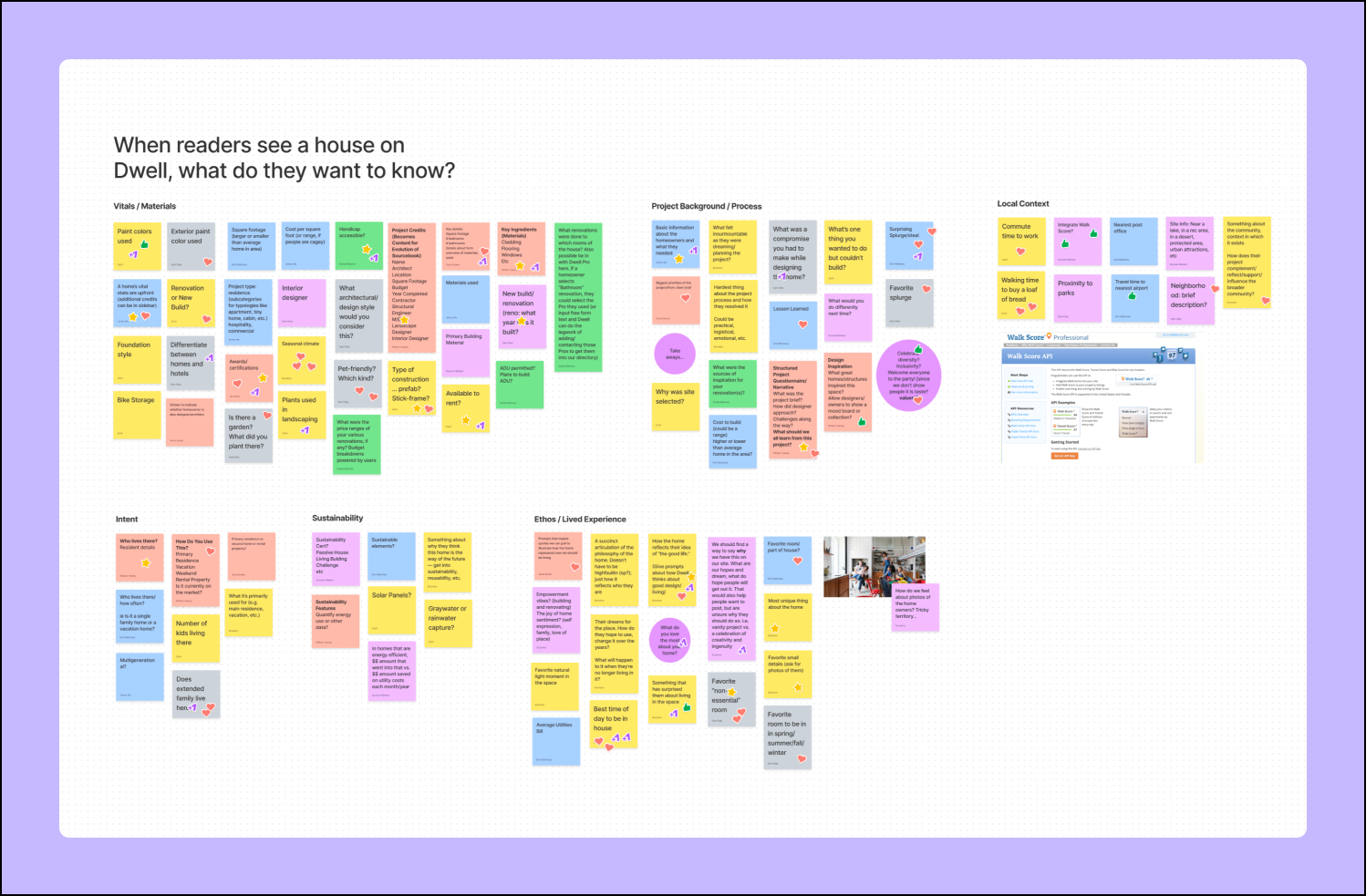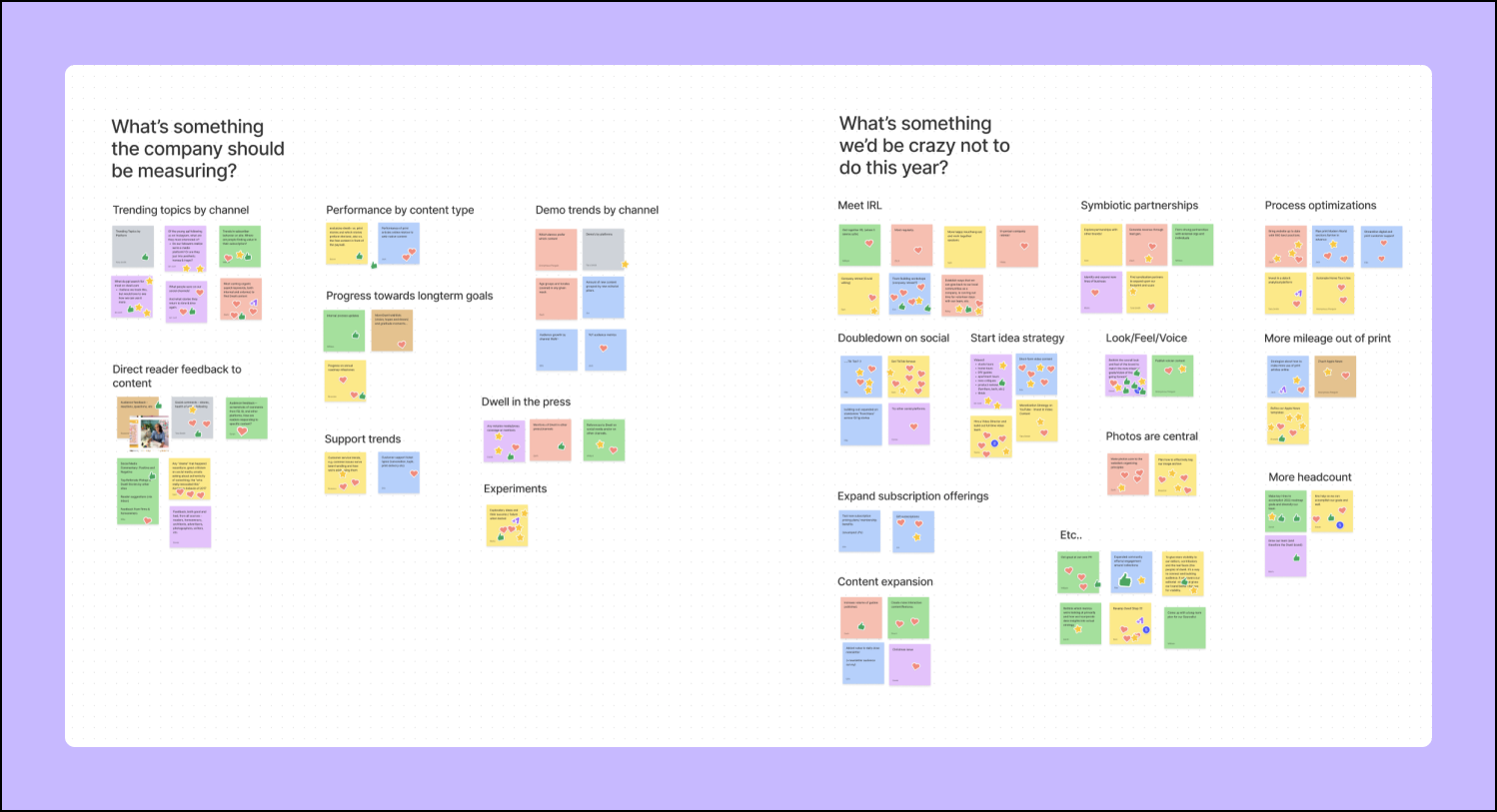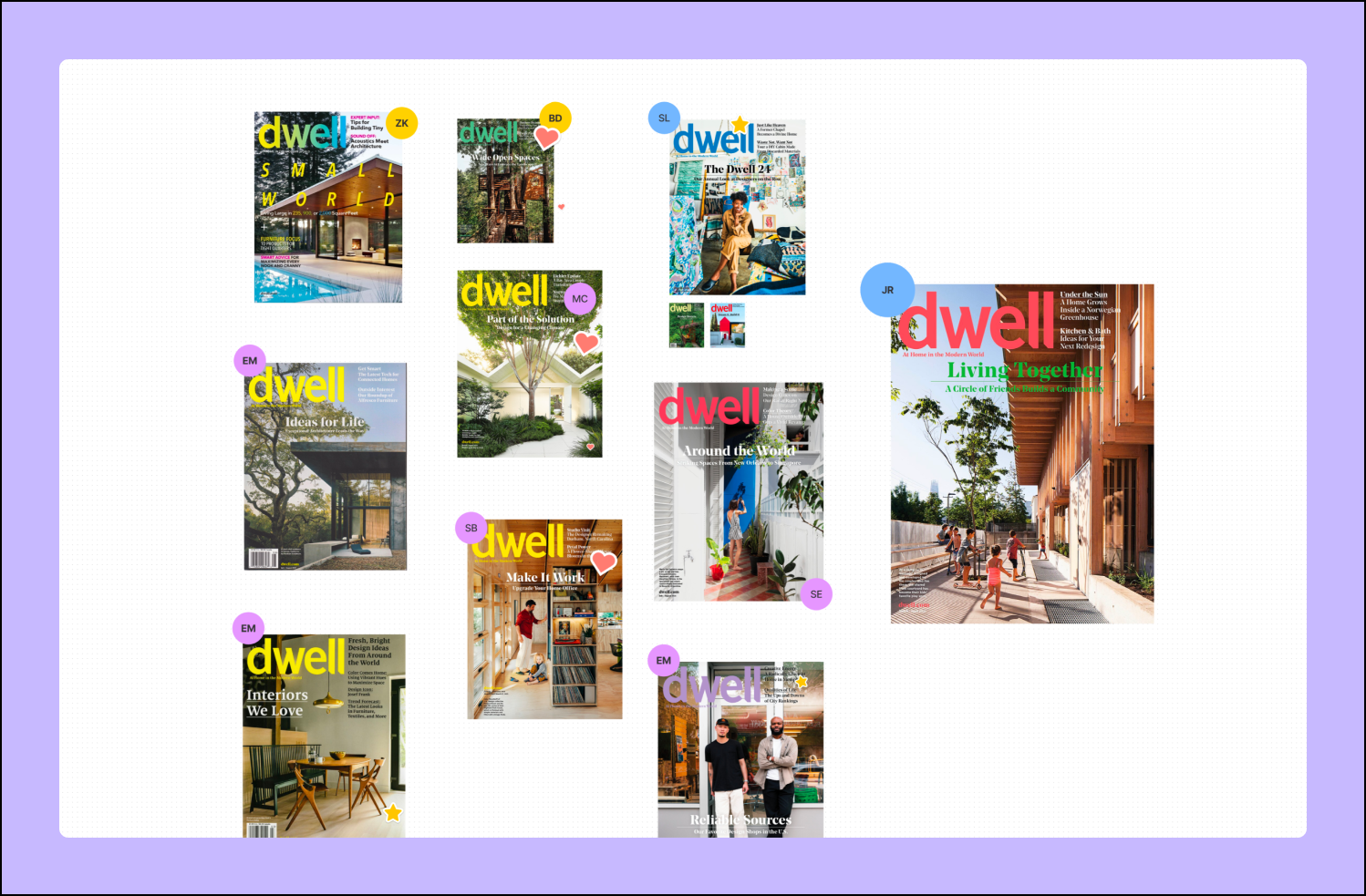Dwell’s creative secret weapon? Swarming.
Dwell has a well-established culture of company-wide brainstorming, a concept they call “swarming.” During a swarm, someone will post a topic that they want to discuss into a Slack channel, throw in a FigJam link, and invite anyone from the company that is interested to join in and “swarm” on that subject. Swarms last around 10 to 15 minutes and can range from discussing a magazine feature idea to hammering out the details of company goals and editorial strategy. FigJam, Figma’s new online whiteboard space, acts as a blank canvas for the team to collaborate and explore ideas openly and freely as a team.
1. Gather the feedback you need
Swarms originally gained momentum within Dwell’s product team as a way to gather impromptu feedback on concepts and wireframes. As more and more people outside the product org started participating, swarms moved from Figma to FigJam because it was more lightweight and didn’t require any upfront tool explanation.
As valuable as company-wide brainstorming session can be in gathering different perspectives on sticky problems, it can be hard to share in progress work. Dwell quickly found that the prompts for “swarms” needed to be laser-focused on the type of feedback team members needed. Here are some examples of successful swarms from Dwell:

2. Brainstorm company goals
Swarms are meant to be casual and inclusive, where no topic is off the table. Dwell CEO Zach Klein made FigJam available to everyone at the company so that swarms could be accessible to anyone who wanted to participate. Zach is known to host swarms around anything from small projects to company-wide goals. Swarms can be a way to gain buy-in on a common metric across the company and also get people thinking tactically about what it is going to take to tackle it at every level.
Recently, Zach called for a swarm to get company-wide input on a performance metric. He walked the team through the new metric, pasted in relevant interfaces using FigJam, and set a 10-minute timer. In that handful of minutes Zach got an invaluable range of perspectives from different teams and individuals on how to tackle a critical company goal.

3. Source for editorial ideas
Today, swarms have a dedicated space on the calendar each week for the entire company. One hour is set aside weekly for anyone to host a 10 to 15-minute long swarm session in FigJam. These weekly forums are a way to source new ideas and also get a glimpse into what other teams are working on.
For the editorial team, FigJam is an open space to collect ideas that doesn’t require inviting everyone into a written file. For example, a member of the editorial team will start a swarm in FigJam to source ideas on anything from visuals for story to cover shots. Nearly half the company participated in the 10-minute swarm, which consisted of a 5-minute brainstorm and a 5-minute upvote session. In the end they walked away with 100+ new ideas, ranked by vote.





